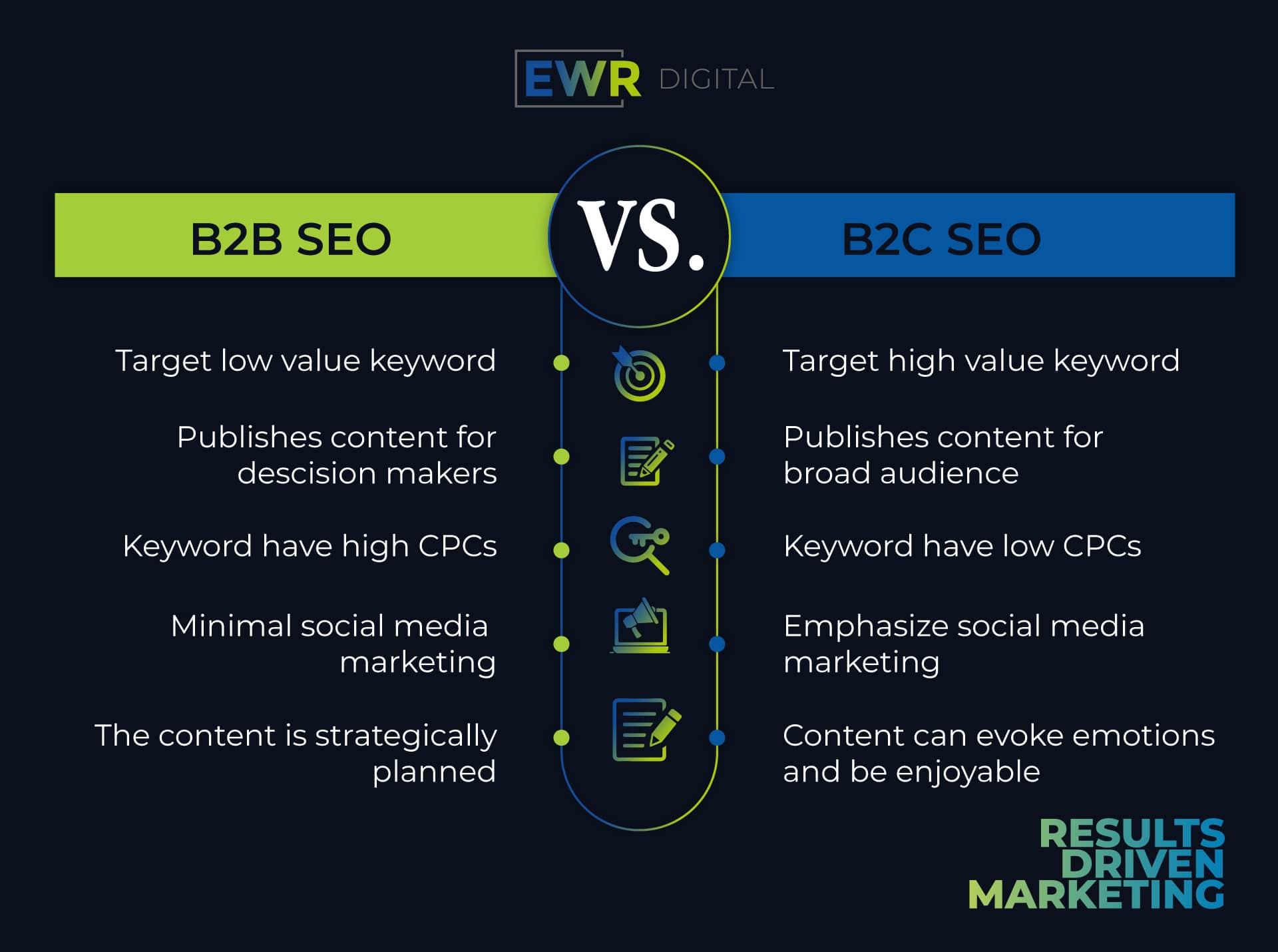
There are billions of existing websites out there, which creates some stiff competition for Internet users’ attention. You can write great blog content or tweet several times a day, but it won’t matter if no one ever sees it. That’s why business leaders need to focus on online visibility. In this virtual space, you need to make moves to stand out and get noticed. Otherwise, you may risk getting lost in the crowd.
Luckily, there are plenty of tools and tactics at your disposal. If you’re wanting to make your brand more visible online, then start with this guide. With it, you can create a solid foundation for attracting the attention of your future customers.
START WITH SEO FOR ONLINE VISIBILITY
The first thing you need to increase visibility online is search engine optimization.
SEO has been around since the early days of search engines, and you may have heard of it for that reason. You may also have heard plenty of myths about it. For example, SEO doesn’t work.
The truth is that SEO can and does work. In fact, it’s integral to the rest of your online marketing efforts. There are many moving pieces with it, though, and it can take some time to show results.
People who say SEO doesn’t work may not have been patient enough to see the fantastic results SEO can yield. It’s also possible they’ve tried to do it themselves, made mistakes, or even used outdated techniques. Any of these missteps can limit the potential of SEO, leading to the idea it “doesn’t work.”
SEO also has a reputation as being “tough” to do the right way, but it doesn’t have to be. As long as you understand how to use it effectively, you’ll be well on your way to building a more visible online brand.

HOW DOES SEO BUILD VISIBILITY?
SEO makes it easier for the audience to find you. Consider that 93 percent of online experiences start with a search engine. Google handles billions of inquiries every day.
That’s a lot of people looking for something. They might be looking for the information you have or the products you sell. If your page doesn’t show up on the top page of search results, though, they won’t even know you exist.
Most people won’t search beyond the first page of Google results. In fact, most people don’t even get through the top ten. The top spot claims the most clicks, with the second and third results getting most of the rest.
Sites that show up in the remaining first-page slots get even fewer clicks. If you’re landing on Page 2, your website and your business are invisible to most people.
Good SEO can change that story. When done right, SEO pushes your page higher in the search rankings. The result is that your page ends up in front of more of your potential customers.
WHAT ARE THE BENEFITS?
As established, good SEO will push your website higher in search engine results. This, in turn, builds online visibility. It also increases brand awareness and trust.
Next, it also drives traffic to your website. Good SEO also affects your content, which can increase dwell time on your site. In turn, people will spend longer on your site.
This works to continue building trust and recognition. People may turn to you the next time they have a question. They’re also more likely to buy from you because they recognize your business name.
People may also share your content. That feeds back into your SERP ranking and your online visibility.
Finally, SEO can help you dominate your competitors. If you can outrank them, you’ll improve your visibility while minimizing theirs.
Here are some statistics related to the benefits of online visibility and search rankings:
-
Click-through Rates (CTR): The first organic search result on Google receives approximately 32.5% of clicks, while the second and third results receive about 17.6% and 11.4%, respectively. (Source: Advanced Web Ranking)
-
Traffic and Conversions: Organic search drives 53.3% of all website traffic, making it the primary source of web traffic. (Source: BrightEdge)
-
Local Search: 72% of consumers who perform a local search visit a store within 5 miles of their current location. (Source: WordStream)
-
Mobile Search: Over 50% of all website traffic comes from mobile devices, highlighting the importance of mobile-friendly search rankings. (Source: Statista)
-
Trust and Authority: Websites that rank higher in search results are perceived as more trustworthy and authoritative by consumers. (Source: Search Engine Journal)
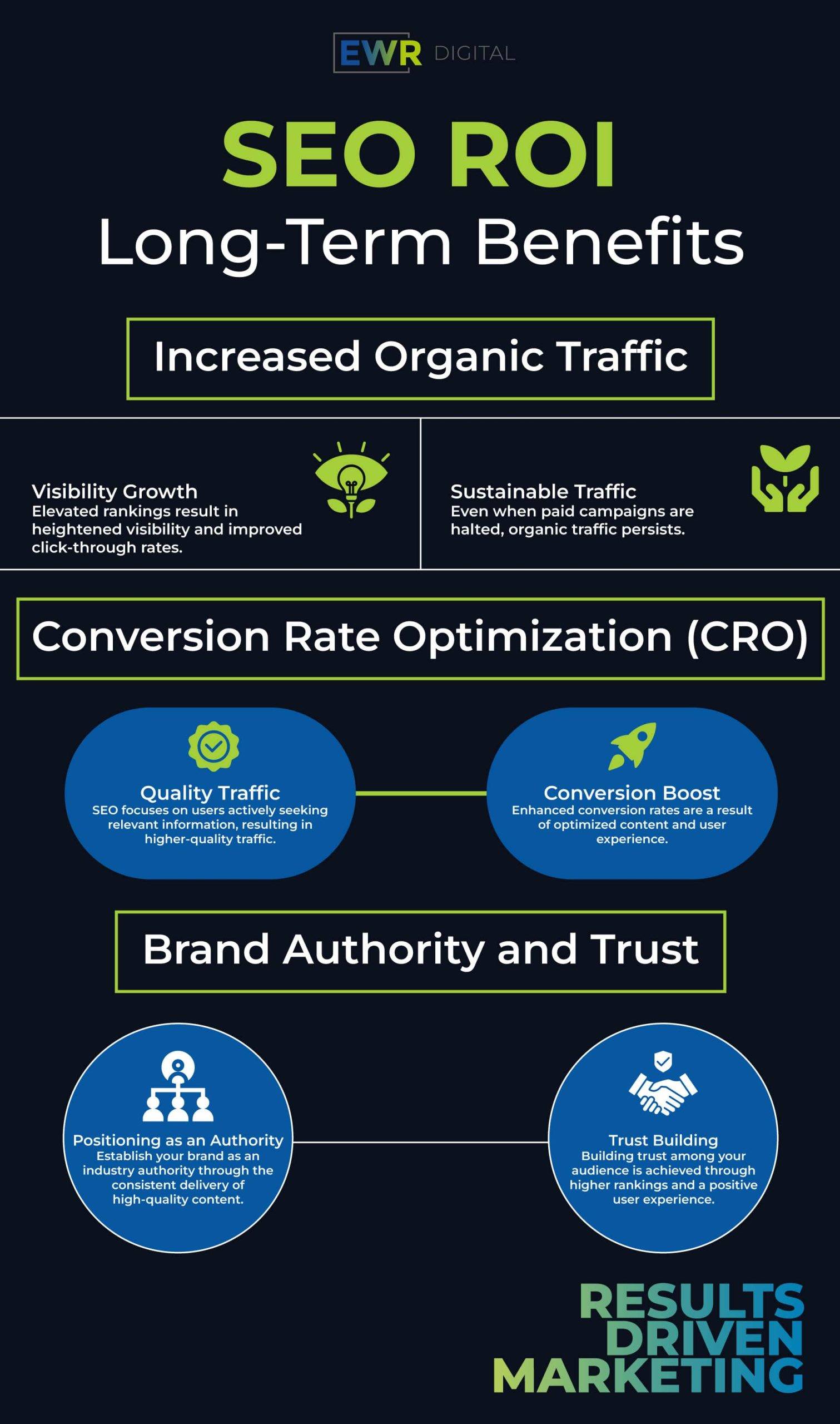
DOING SEO THE RIGHT WAY
Note that “good” SEO will move you up in the SERPs. So, what is good SEO, and how do you get it?
SEO has the reputation it does in part because it’s always changing. The tactics you were using a year or two ago won’t work today.
Unfortunately, search engines are always tweaking their algorithms to deliver better results to their users. Good SEO anticipates what search engine algorithms want, which reflects what users want.
Take keywords, for example. At one time, it was possible to “stuff” your page with a keyword and hit the #1 spot on Google. Today, Google will penalize you for doing that.
Why? Keyword stuffing usually results in low-quality content that doesn’t meet user expectations. People were upset about landing on sites using this method, so Google changed the algorithm.
Keywords have also changed and evolved over time. Search users in the past usually typed in their search term and hit enter. Semantic search is making it possible for people to ask grammatically correct questions and get the answers.
As a result, your keyword research has to include longtail keywords. You need to look at voice search trends as well since people use keywords differently in voice search. Even something like Google’s BERT update will affect how people search.
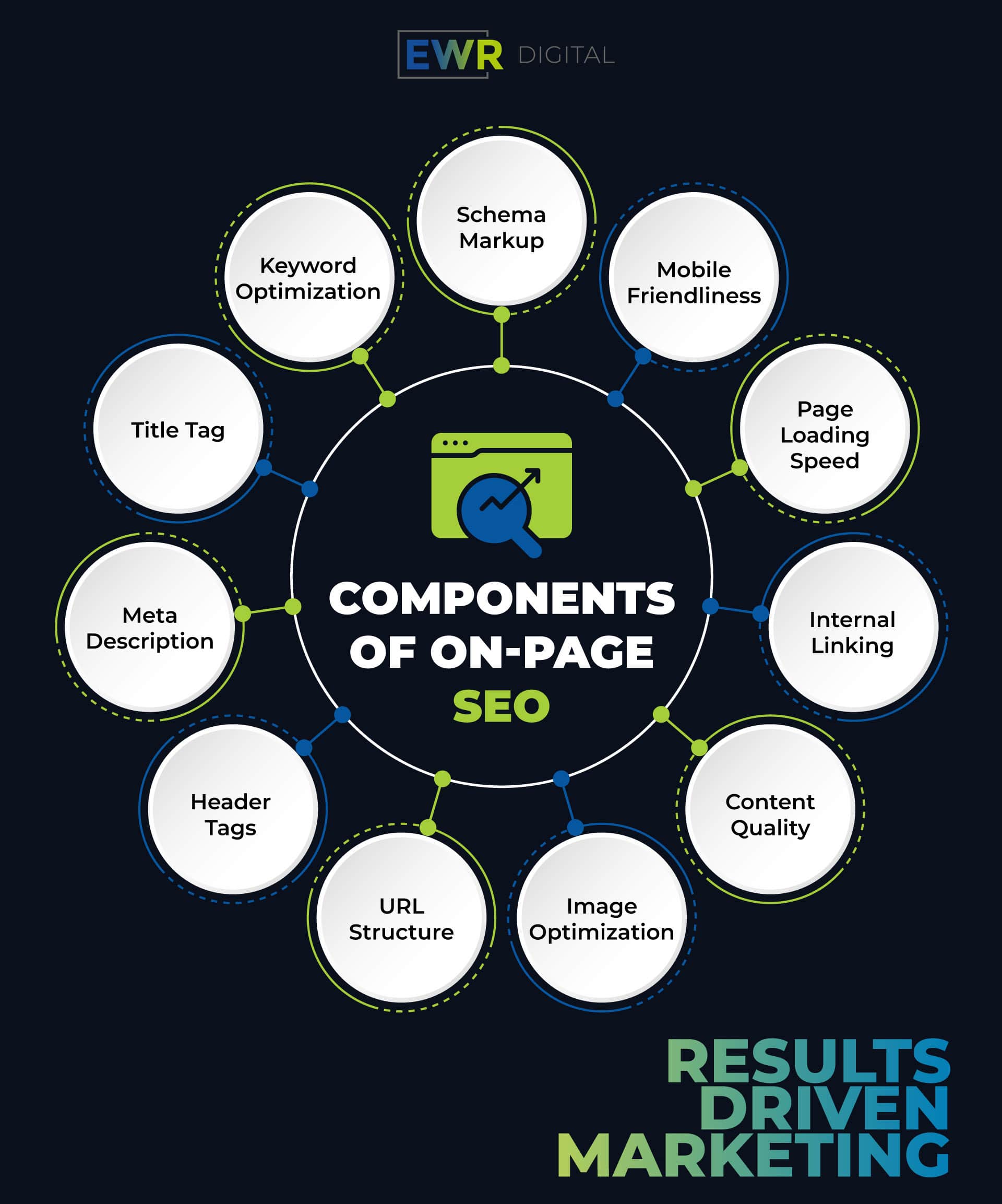
MOVING BEYOND KEYWORDS
Today, SEO is much more convoluted than just picking the right keywords. You’ll need to pay attention to three major categories of SEO tactics:
- On-page SEO
- Off-page SEO
- Technical SEO
On-page SEO includes your keywords. It also looks at factors like content length and meta descriptions. Other on-page SEO factors include:
- Internal links
- Page titles
- URLs
- Images
- Alt descriptions
That sounds like a lot, but the great news is many of these factors are easy to adjust for SEO purposes.
Off-page SEO factors are more difficult to control because they’re on other websites. They can be particularly important for local SEO, though. These factors include:
- Backlinks from reputable sites
- Listings in business directories
- Brand citations
Some aspects of social media play into your off-page SEO, but it depends on the search engine. Google puts much less emphasis on social media unless it’s Google My Business or YouTube. Bing tends to give social media presence more weight.
Technical SEO is the technical aspects of your website. Here’s where you’ll find factors like:
- Website speed
- Mobile-friendliness
- Schema markup
- XML sitemaps
- Image optimization
Design can also play a role here since light designs tend to result in faster load times. Image optimization also increases website speed.
Both of these options are mobile-friendly as well. Mobile-friendliness also emphasizes speed, which is why mobile designs are usually more streamlined. Images and videos optimized for mobile also load faster.
Mobile is important as more people are searching and shopping this way. In the future, many people will use only their smartphones and tablets for Web access.
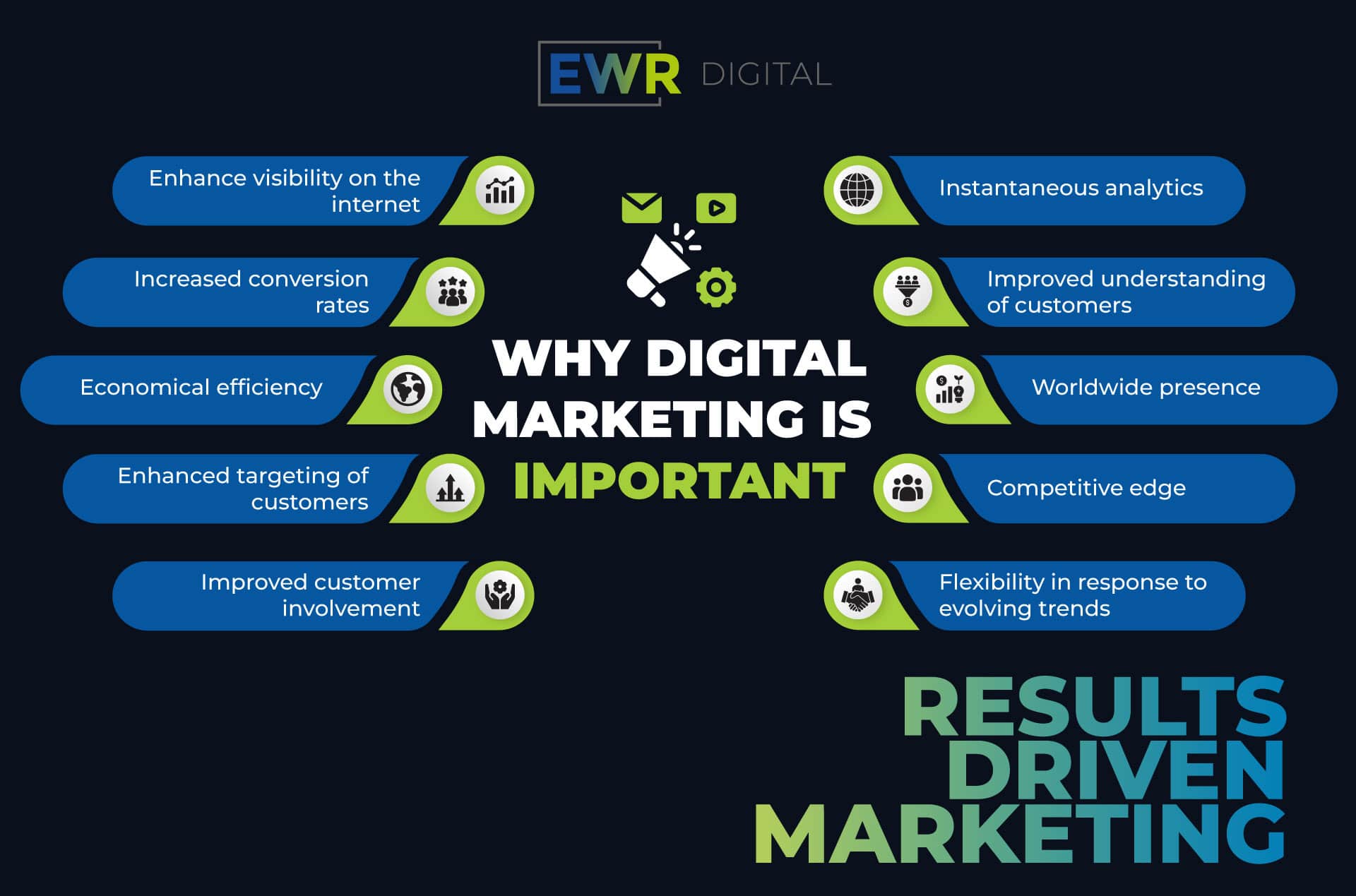
HOW SEO BUILDS INTO OTHER MARKETING ACTIVITIES
If you’re wondering how to increase brand visibility, you might consider other digital marketing avenues. You might want to use any or all of the following:
- Content marketing
- Paid search marketing
- Social media marketing
- Pay-per-click ads
There are several other options, such as video marketing and over-the-top advertising. Almost no matter what you choose to invest in, SEO can help you achieve your goals.
For example, you can look at how SEO improves the performance of content marketing.
Suppose you create a great how-to video and upload it to your website. Unfortunately, since your site isn’t optimized, your page isn’t ranking. Nobody watches your video or shares it.
It’s a great video, but without SEO, it’s not going anywhere. So, what happens when you optimize it?
As your page rises through the ranks, you’ll find more traffic being driven to your website. More people will see the video, and more of them will share it with their networks. Your brand continues to get more notice.
More people discover your brand, and they also begin to build trust with you. The next time they need information, they may decide to turn to you. Eventually, this turns into a sale and a new customer.

HOWHY SEO BOOSTS SOCIAL MEDIA AND PPC
Your business visibility online is also important for social media marketing, PPC, and more. How does SEO improve your social media marketing?
Increasing visibility creates awareness and recognition. Someone conducts an internet search, and one of your how-to guides crops up in the search results. They don’t click right now, but they’ve seen your name.
Now they’re on Instagram, and they see one of their friends has liked a post from your business. They recognize that name! They spend a little longer looking at your post, and they decide to follow you.
The same thing happens with PPC ads on social media platforms and search engines. The next time someone will search for a product and your ad pops up on Google, they might end up clicking it. They recognize your name, so they’re willing to give you a shot.
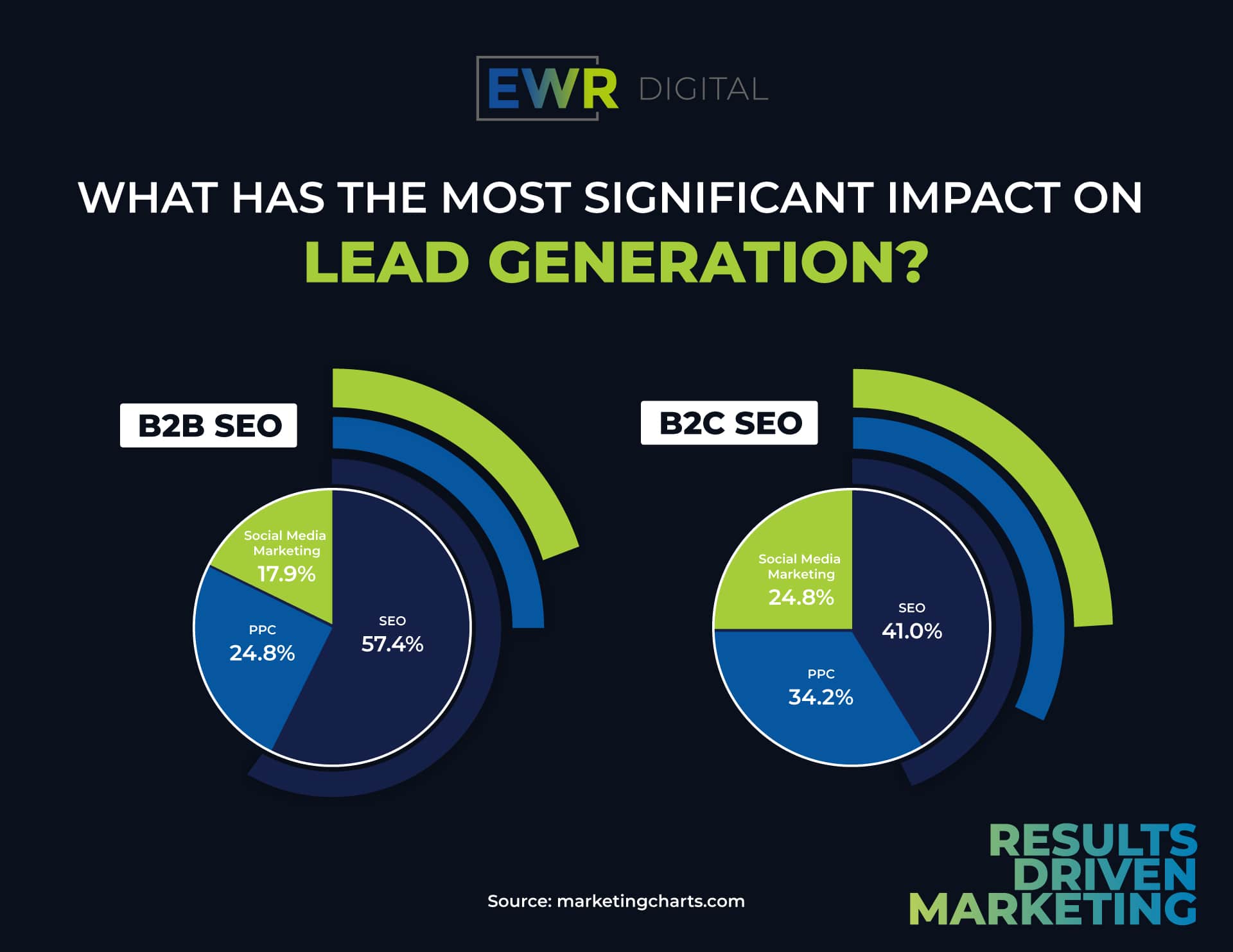
BUILDING A HOLISTIC MARKETING STRATEGY
It only benefits your business and your marketing strategy to increase online visibility. To get online visibility, though, you need to craft a strategy that will work as a whole.
It doesn’t make sense to invest in content marketing without SEO. It doesn’t make sense to invest in PPC ads or social media marketing without some content strategy.
When you combine these digital strategies, they work together to make your brand more visible. That, in turn, heightens brand awareness and trust. Increased trust moves people along your marketing funnels.
The name of the game is to increase visibility. People can’t become customers if they don’t know your business exists.
NEXT STEPS FOR YOUR STRATEGY
The first step in any marketing strategy, digital or otherwise, is setting goals. You want to increase online visibility, but what else do you want to achieve?
Many business leaders want to drive traffic to their website, generate more leads, and make more sales. These are all good goals.
Once you have goals, you can determine what methods you want to use to achieve them. Content marketing is great for generating leads. SEO can help you drive traffic to that content.
What methods should you focus on if your primary goal is increasing visibility online?
SEO is one of them. SEO should be a staple in any digital marketing strategy.
Integrating it with good content marketing is an excellent plan. For this reason, you may also want to focus on your content strategy. SEO can help you promote your content, but it also helps to have standout content.
Another SEO tactic you might want to focus on for visibility is link-building. This is the most important factor in your off-page SEO.
How does link-building help with visibility? It creates backlinks to your page, but it also gets your business in front of another audience. It may also help you build trust with these consumers.
Keyword research, competitive audits, and more can also help you develop a comprehensive strategy for both SEO and content. In this way, you can create a strong foundation for ever-greater online visibility.
GET YOUR BUSINESS NOTICED NOW
Online visibility is something every business needs to invest in. People will only become your customers when they know your business exists. Visibility gets you the attention you need.
SEO, content marketing, and other techniques work together to improve visibility online. Creating a holistic marketing strategy integrates each method, so each method can build off the others.
Are you unsure on where to get started with SEO or a more integrated marketing strategy? It’s time to call in an expert team. With the right knowledge and expertise, you’ll be well on your way to making it easier for your future customers to find your business.
Let’s get started! Get in touch and discover just what the right digital marketing team can do for you.
